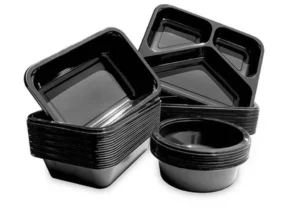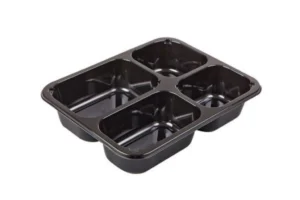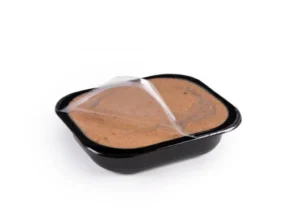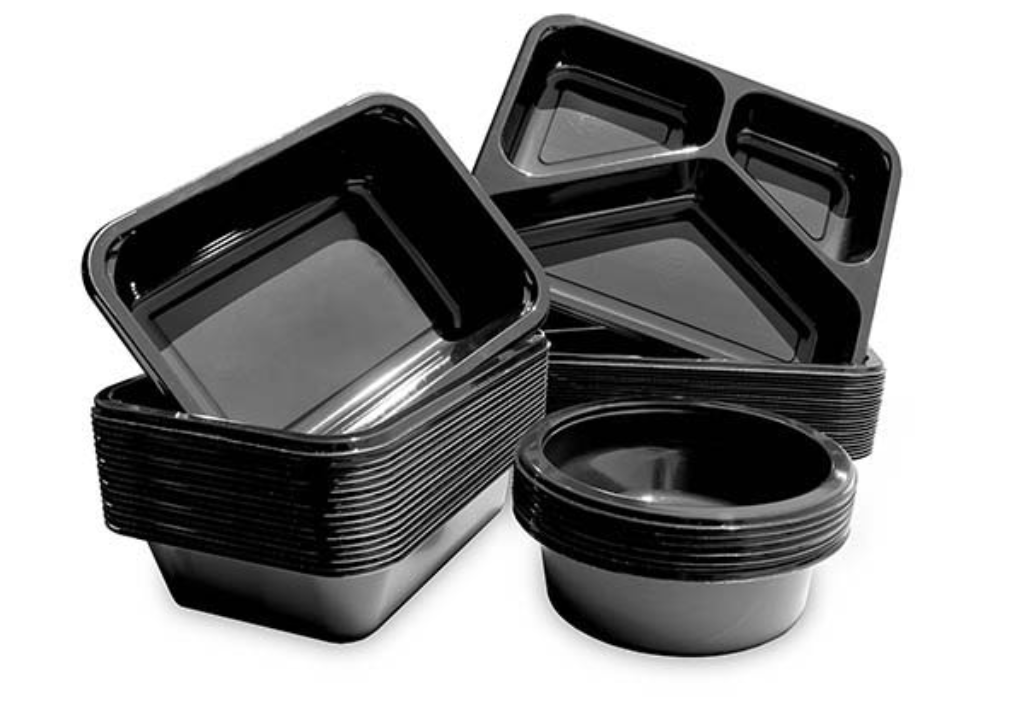The Procurement Dilemma: Choosing Between CPET Trays and Aluminum Pans
When purchasing disposable baking or food packaging containers, food professionals and procurement managers face a critical decision: CPET trays vs aluminum pans? Aluminum pans have long been the industry standard, valued for their excellent heat conductivity and established presence in commercial kitchens. Meanwhile, CPET trays are rapidly gaining market share due to their customization capabilities and enhanced safety profiles. However, procurement teams consistently struggle with fundamental questions: “Which material provides better heat resistance for high-temperature baking operations?”, “Which delivers superior cost-effectiveness for bulk purchases?”, and “Which better aligns with evolving consumer environmental expectations?” This article conducts a systematic comparison across two critical dimensions—performance capabilities and comprehensive cost structures—providing targeted selection guidance to help you make the optimal choice for your business operations. For additional packaging solutions and product specifications, visit our official website at www.jhpkg.com.
Core Performance Comparison: CPET Trays vs Aluminum Pans

Heat Resistance & Temperature Adaptability – Both materials demonstrate strong thermal capabilities, but with distinct characteristics. Aluminum pans typically withstand temperatures between 220-250°C, suitable for most conventional baking applications. However, they exhibit vulnerability to thermal shock—rapid temperature transitions from oven to refrigeration can cause warping and structural compromise. CPET vs aluminum food containers reveals that CPET trays maintain stable performance at 220°C while also tolerating extreme low temperatures down to -40°C without brittleness or cracking. This dual-temperature capability proves invaluable for businesses requiring both baking and frozen storage capabilities. Consider a bakery producing croissants for multi-day distribution: the product requires high-temperature baking, rapid cooling, and frozen storage for logistics. CPET trays accommodate this entire thermal journey without material degradation, while aluminum pans would require container transfers, adding labor costs and contamination risks.
Heat Conductivity & Baking Effect – Aluminum’s superior thermal conductivity represents its strongest competitive advantage, distributing heat rapidly and uniformly across the cooking surface. This property produces excellent crisping effects and reduces baking time by approximately 8-12% compared to CPET alternatives. For products requiring uniform browning—such as cookies, tart shells, or certain bread varieties—aluminum delivers predictable, consistent results. However, CPET trays performance vs aluminum demonstrates that CPET’s moderate conductivity offers distinct benefits for delicate applications. The crystallized structure of CPET distributes heat steadily without creating hot spots, reducing the risk of localized burning on sensitive items like custard-filled pastries or cheese-topped products. Professional pastry chefs working with temperature-sensitive formulations often prefer CPET’s gentler, more controlled heat distribution pattern.
Food Safety & Barrier Properties – Material reactivity presents a critical consideration for diverse food applications. Aluminum pans can react with acidic ingredients (citrus-based fillings, tomato components) or alkaline substances, potentially causing metallic taste transfer and trace metal migration into food products. While food-grade aluminum coatings mitigate this concern, the protective layer can degrade with repeated heating cycles. Food-grade CPET trays manufactured to FDA and LFGB standards demonstrate complete chemical inertness—no reactions occur regardless of pH levels or ingredient composition. Beyond reactivity, barrier performance significantly impacts shelf life. CPET’s molecular structure provides superior moisture and oxygen resistance compared to aluminum, extending the commercial shelf life of baked goods by 3-5 days according to controlled storage studies. For brands distributing products through extended supply chains or selling in retail environments, this preservation advantage translates directly to reduced waste and improved product quality at point of consumption.

Environmental Friendliness & Recyclability – Sustainability considerations increasingly influence procurement decisions as consumers and regulators demand environmental accountability. Aluminum pans achieve 100% recyclability, and the material can undergo infinite recycling cycles without quality degradation—a significant environmental advantage. However, aluminum recycling requires substantial energy input, consuming approximately 95% less energy than primary production but still representing considerable resource demands. Recyclable CPET trays also qualify for standard PET recycling streams, with recycling energy requirements 20-30% lower than aluminum processing. Additionally, CPET’s lighter weight—approximately 40% less than equivalent aluminum containers—substantially reduces transportation-related carbon emissions across distribution networks. For a national food brand shipping 500,000 containers annually, switching from aluminum to CPET can decrease logistics-related CO₂ emissions by 15-18 metric tons yearly. Brands pursuing certified carbon neutrality or enhanced sustainability metrics find this emissions reduction strategically valuable.
Cost Analysis: Comprehensive Comparison of Immediate and Long-Term Expenses

Examining unit purchase prices in isolation, aluminum pans appear marginally more economical. For bulk orders of 10,000 pieces, aluminum pans typically cost $0.15-$0.20 per unit, while CPET trays cost ranges from $0.18-$0.25 per unit—representing an apparent 15-20% price premium. However, comprehensive total cost of ownership analysis reveals a different economic reality:
Transportation Economics – CPET’s reduced weight delivers immediate logistics savings. CPET trays weigh approximately 30% less than comparably sized aluminum pans. For a standard 20-foot container shipment, this weight differential translates to approximately 25% lower freight charges. A bakery chain ordering quarterly shipments of 50,000 containers saves roughly $800-$1,200 per shipment in reduced transportation costs, accumulating to $3,200-$4,800 annually.
Storage Efficiency – Space utilization directly impacts warehousing expenses. CPET trays demonstrate superior stackability characteristics—1,000 CPET containers occupy approximately 40% less cubic volume than 1,000 aluminum pans due to more efficient nesting geometry. For businesses paying $8-$12 per square foot for warehouse space, this spatial efficiency reduces storage costs by 12-15%, freeing capacity for additional inventory or reducing facility requirements.
Waste Reduction – Material durability affects replacement costs. Aluminum pans, despite their inherent strength, are susceptible to deformation during handling and transportation. Industry data indicates aluminum pan damage rates of 5-8% during typical distribution cycles. CPET trays, with superior impact resistance, demonstrate damage rates of only 1-2%, reducing waste-related repurchase expenses by approximately 4-6% of total procurement volume.
Operational Summary – For a mid-sized bakery operation with annual container purchases of 100,000 pieces, comprehensive cost modeling—incorporating purchase price, transportation, storage, and waste factors—reveals that cost-effective CPET trays for chain bakeries deliver total cost savings of approximately 10-12% compared to aluminum alternatives despite higher unit prices.
Conclusion & Strategic Next Steps
The CPET trays vs aluminum pans comparison reveals that both materials serve legitimate purposes within the food packaging landscape. Aluminum pans maintain advantages in thermal conductivity and established supply relationships, making them suitable for specific traditional baking applications. However, CPET trays demonstrate clear comprehensive advantages across versatility, food safety, customization potential, and total cost of ownership when evaluating long-term business value. For enterprises pursuing brand differentiation, operational scalability, and sustainable business practices, CPET trays represent the strategically superior investment.
As a specialized CPET tray manufacturer with over 15 years of production experience, we currently serve 300+ food brands worldwide with customized packaging solutions engineered for diverse applications. Visit www.jhpkg.com to explore our complete CPET product specifications, review detailed case studies from similar businesses, and access comprehensive technical documentation. Contact our technical team directly to receive complimentary sample containers and a personalized cost analysis report calculating your specific total cost of ownership scenarios. Make your packaging decision based on complete data rather than assumptions.

